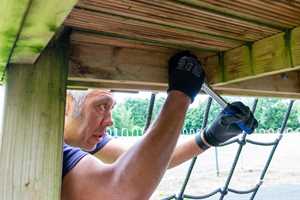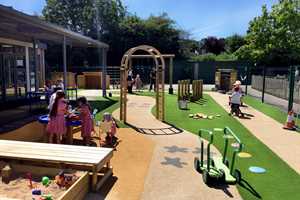Playground Design
Is your play space fulfilling its true inclusivity potential?
What is Inclusive Play?
I tend to think of the term ‘inclusive play’ to mean that everyone can participate and feel included. As practitioners, we recognise the importance of play both indoors and outdoors.
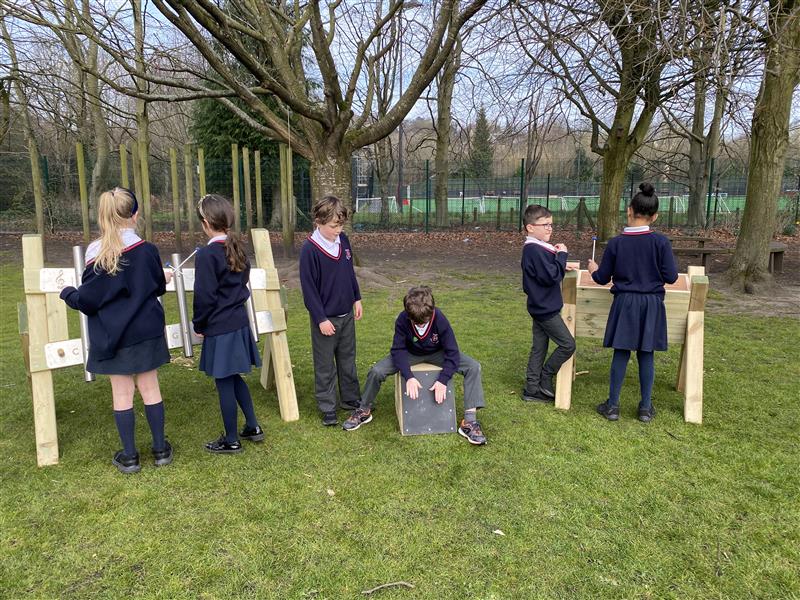
Through play, children are provided with first hand opportunities to experiment, take risks, have fun and overcome challenges. Sustained involvement in play fills children with a sense of wonder, develops social skills and helps to make sense of the world around them.
An inclusive setting welcomes children with a range of abilities, backgrounds and personalities, providing a high-quality experience for all. Pupils want to feel comfortable in a playspace.

They need to feel a sense of achievement, that they can join in with their friends and that they can make some choices. By making changes to our play environments, we can introduce new possibilities for inclusive play.
When a play environment has been neglected, children may not be provided with opportunities to expand and develop their play which can lead to frustration, disagreements and less time for quality interaction between peers.
For some children, they may need a longer time or repeated visits to make sense of their playspace and to learn how to interact with it. Pupils must experiment and explore their environment at their own pace. Each child will interact with a playspace in their own unique way.
Every play environment is different. The physical features, the setting, staff and pupils and school vision and values helps to create a certain atmosphere which allows learners to excel.
Pupils may require different playground features depending on age, experience, circumstances and interests yet in general children want an interesting space within nature where they can be challenged to take some risks and to interact with peers.
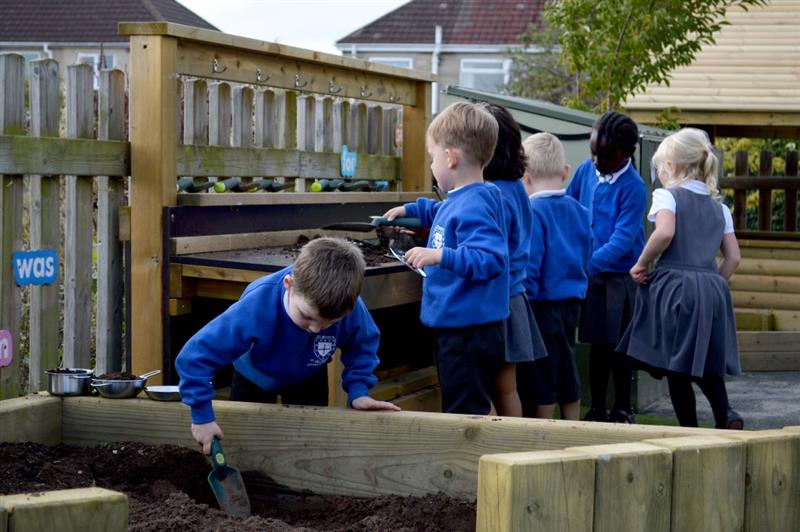
An Ever-Changing Natural Environment
The natural environment is a great source of fascination for children as it is constantly changing.
During every season there are different natural items that children can use within their play. Seeds can be currency in the shop, various pebbles are pirate treasure and a collection of leaves can be blankets for the acorn animals.

Get, Set Go! Blocks can be used as a bridge, a balance beam, a shop display counter, or a home for the toy farm animals.
A Mud Kitchen can become a restaurant, a potion station or a garden centre.
When different areas and equipment can be used in countless ways, play is not limited and can be viewed as inclusive. Children have different ways of playing with equipment, sometimes ‘the obvious’ choice does not jump out at them and they may see a different possibility.
Sensory Exploration
Children use their senses in order to understand the world around them. Sensory exploration improves brain development and memory function as children learn to solve problems and improve upon communication skills.
A variety of sensory elements and natural features can enhance play, particularly for pupils with sensory impairments or sensory processing disorder.
Pentagon Play use natural timber to create a variety of multi-functional products. The use of natural timber can create a softer, tactile, comforting environment.
Introducing planters into a playspace can provide shelter and will be useful for visual and tactile learners who may experience sensory difficulties. Planters can help to zone and break up large playspaces whilst also giving pupils a sense of privacy.
Plants, flowers and trees create different noises such as rustling, whooshing and snapping which can help pupils to know their location within a busy playground.
Sensory Panels allow children to explore a variety of different textures such as soft, rough, hard, smooth, or jagged which help children to self-regulate.
Different colour combinations used in a Sensory Spinner provide a wonderful visual experience. The sounds of the spinning wheel and ball bearings rattling creates interesting noises for auditory stimulation.
A Sensory Tunnel acts as a beautiful playground landmark to guide pupils through a space. The light catching, colourful sculpture can be a calming, tranquil place of interest for learners.

Spaces to Shield and Spark Interest
Sometimes pupils need to retreat to a quieter part of the playground to rest in a seated area. They may feel more comfortable in a smaller, enclosed space which is less, noisy, bright and loud.
A covered area gives shelter from strong wind or sun and supports communication between peers, away from the noise of the main playspace.
It is useful to set clear physical boundaries around a playspace with the use of natural timber or willow fencing. This allows children to feel safe and secure whilst allowing some independence and freedom without constant adult presence.
It is important to have ‘stations of intrigue’ dotted around a playspace, where children can gather together to engage in open-ended play. A Water Wall, Sand Pit, a Playhouse or Playground Chimes all provide pupils with a wide range of play opportunities.
Pupils can watch and interact with others around them, whilst deciding how they would like to participate. Learners can play together through watching, gestures, following a friend and taking a turn, leading to involvement for all.
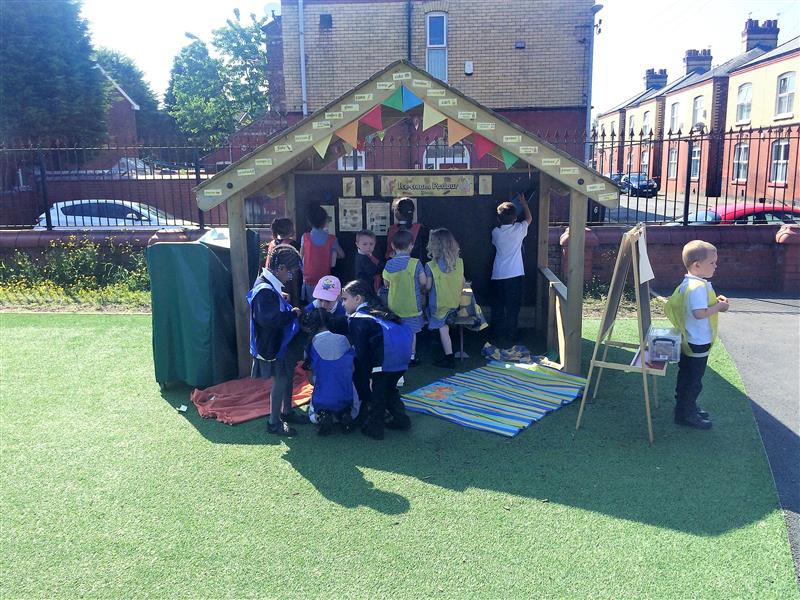
Den Building
Building dens is an important and much-loved activity which develops social and emotional development.
Children become absorbed in the process of creating a den that fits their specific needs and requirements. Den making appeals to a wide range of learners as it can be a quiet, thoughtful activity or something more stimulating and daring.
Den Making Posts can be installed in perfect locations where a space may be underused and next to bushes or trees, this gives learners an ideal starting point for their creations. Care needs to be taken to choose a space that is accessible to all learners yet gives a feeling of privacy.
Den building provides a point of interest for children to gather and interact with and around. It is an open-ended activity, allowing pupils to use a variety of different materials to build structures of different complexity. When den building, children create an enclosed space for pretend games and to share their experiences with each other.
Natural resources such as branches, logs, leaves and twigs can be easily gathered by children. A selection of materials, tarpaulins, ground sheets, old pieces of carpets and mats can be useful. Pupils also like to add items to the inside of their den such as cushions, blankets, stools, cardboard boxes, pots, pans, mugs and plates.
Humanities and science lessons can focus on different shelters from different historical periods around the world and different animal homes giving plenty of ideas for communal den building.
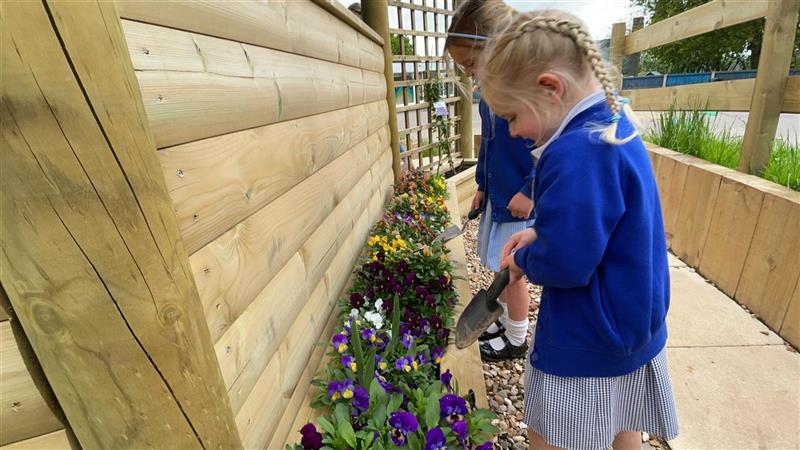
Accessing the Outdoor Environment
It is worth considering how children access their outdoor playspace. By creating a smooth transition between both the indoor classroom and outdoor environment, an outdoor area becomes a place in which play, exploration and hands-on learning are combined.
Pupils realise that an outdoor space helps to develop physical skills and also allows time for play, learning and conversations with friends and adults.
A Timber Canopy is a great solution to easing transition between outdoor and indoor areas. It can be a calming space when pupils are experiencing sensory overload and may want to be near other children but not directly engaged.
Having a large area provides children with plenty of space to move their bodies and allows for outdoor play in all weathers. A School Canopy helps children to view their whole learning environment as one space and promotes natural patterns of play and behaviour.
Outdoor storage solutions for resources and outdoor clothing allows children to independently select items that they need and promotes learning through discovery.
Take to the Track!
Being able to access bikes, trikes, scooters and carts is a favourite activity for children.
Learning to balance and ride, turn corners and navigate bumps presents children with different levels of challenge.
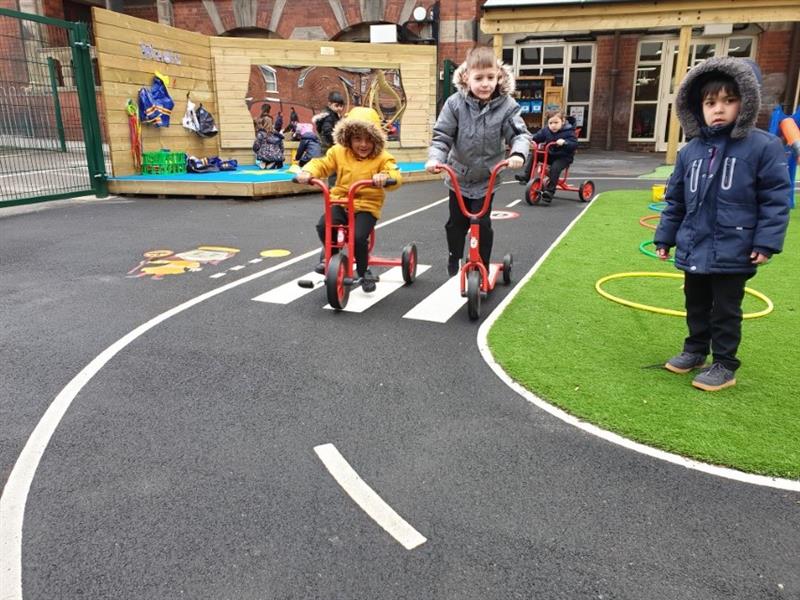
Controlling a wheeled toy helps to develop pupils balance and spatial awareness whilst also supporting social interaction as children follow each other and transport items around the track.
Learners will enjoy using a variety of different vehicles and will realise that some bikes and trikes are better for certain purposes.
There are bicycles available with innovative adjustments that are suitable for all children, allowing those with a disability to cycle by themselves, with others or to be transported.
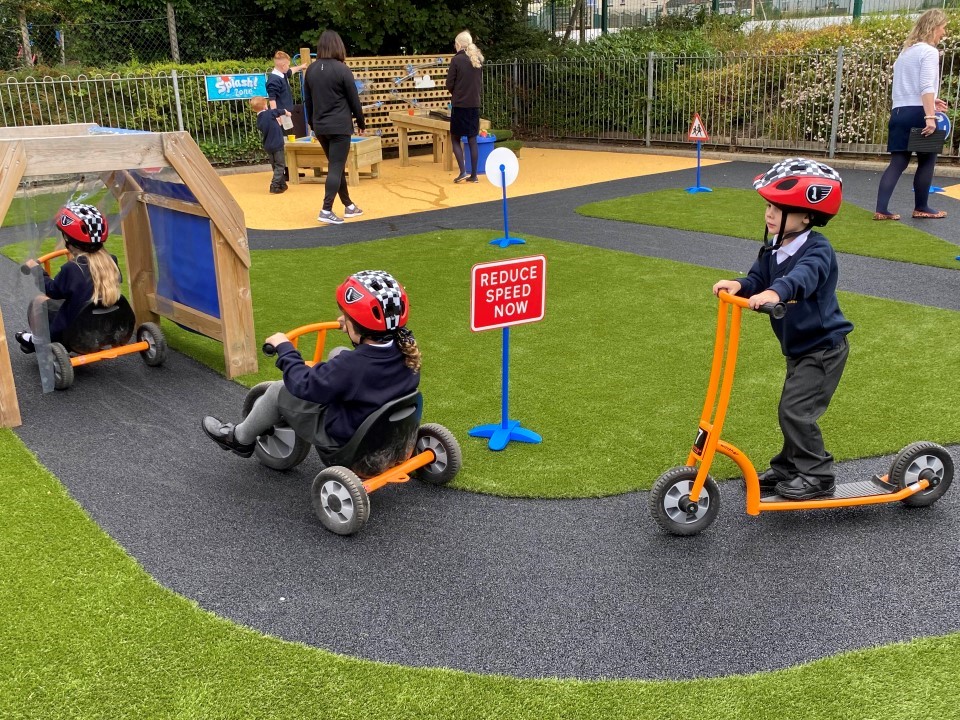
Art in the Outdoors
The outdoor environment offers new opportunities that can extend beyond the indoor classroom and enrich learning.
When outdoors, children are exposed to different sights, sounds and smells which can ignite imaginations and help to develop creativity.
Pattern, colour and texture can be explored as children manipulate found natural materials through play.
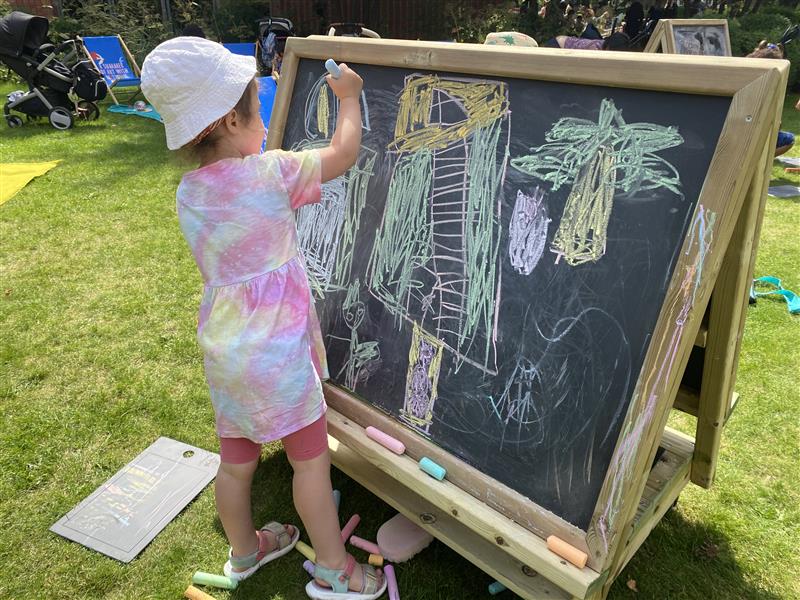
Grass, mud, fallen petals, leaves and moss can be combined with loose parts such as beads, mosaic tiles and wooden shapes to create unique artworks. This encourages children to develop their own personal style and introduces the notion that ‘everybody can succeed’ in art lessons.
Outdoor art lessons help children to appreciate the natural world, the changing seasons and the effects of light and weather conditions. A snowy day allows children to explore painting on ice and snow, a rainy day is ideal for exploring ripples and reflections and on sunny days shadows can be drawn around.
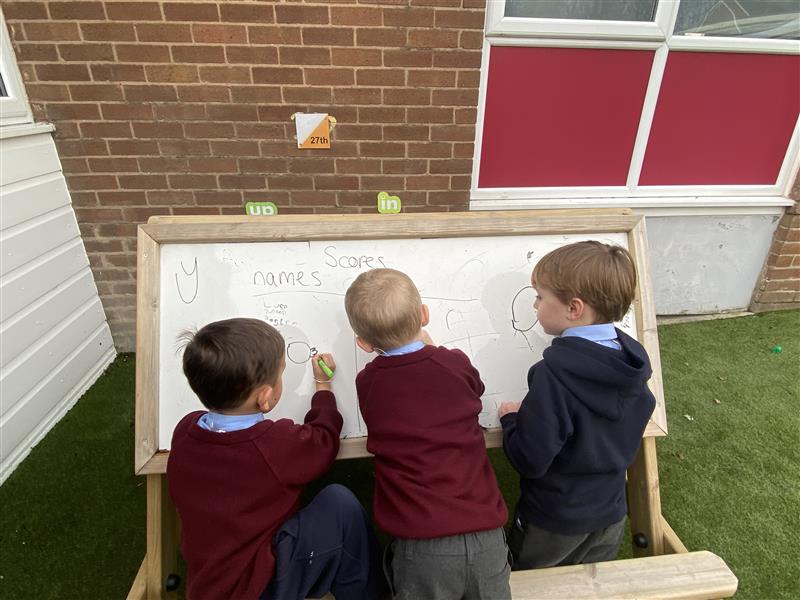
Having a range of art panels throughout a play space allows children to see evidence of art, mark making and children’s creative ideas. Pupils will accept and value different ways of being creative and expressing ideas when viewing their classmates unique work.
A variety of tools such as different sized brushes, rollers, sponges and stamps enables all children to make marks. Lego bricks, wheeled toy cars, bubble wrap, leaves and sticks can be used when painting and creating. Bike or wheelchair wheels can be used to make patterns on large sheets using water soluble paint.
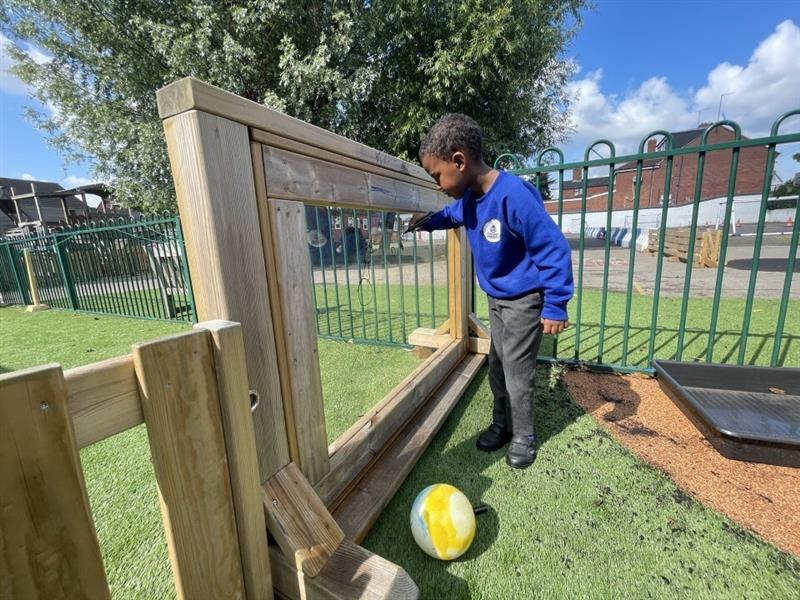
Pupils also enjoy painting with their hands and feet or splashing paint onto large sheets/cardboard boxes attached to the wall or floor. Children can often be happy and intrigued with a paint brush and a bucket of water as they explore painting on different surfaces in the outdoor environment.
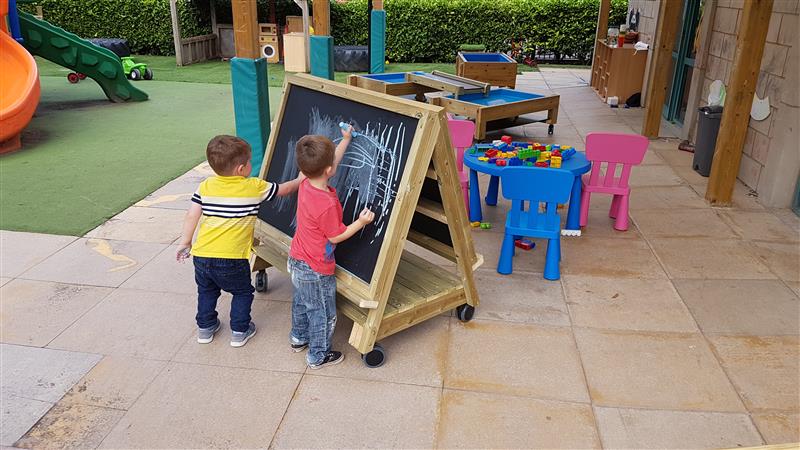
The Right Level of Risk
Children learn to take risks and challenge themselves within their play. As their confidence grows, pupils begin to make their own judgements and consider consequences.
Risk taking will be different for each unique child. Pentagon products allow children to assess the level of risk for themselves, giving them different options to tackle risks when they feel ready.
A Trim Trail for example allows children to enter and exit the equipment as various points and allows for play at different levels. In some sections there may be aids that can be gripped or textured surfaces to help with balance.
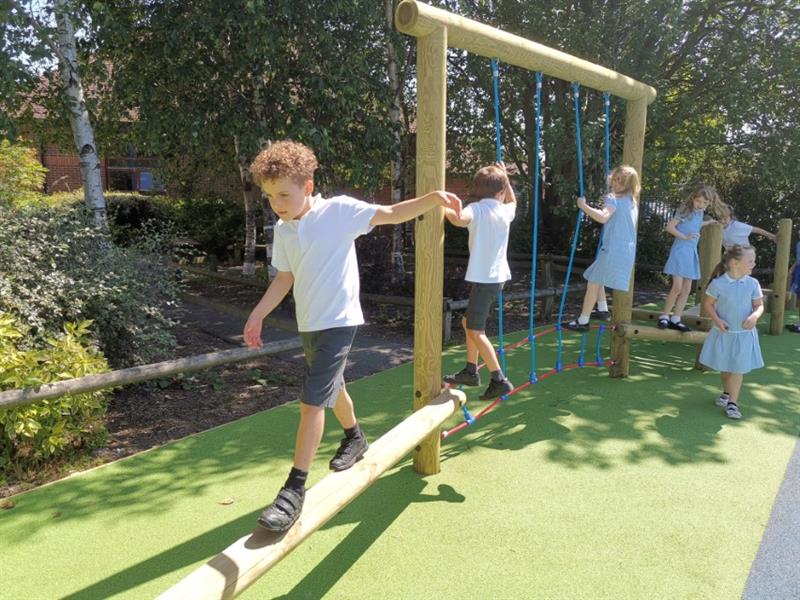
Story Telling and Performance
A Story Telling Circle is a great addition to an outdoor area. Pupils will enjoy taking turns to tell a line/section of a tale. Children can contribute verbally or through pictures, gestures or sounds.
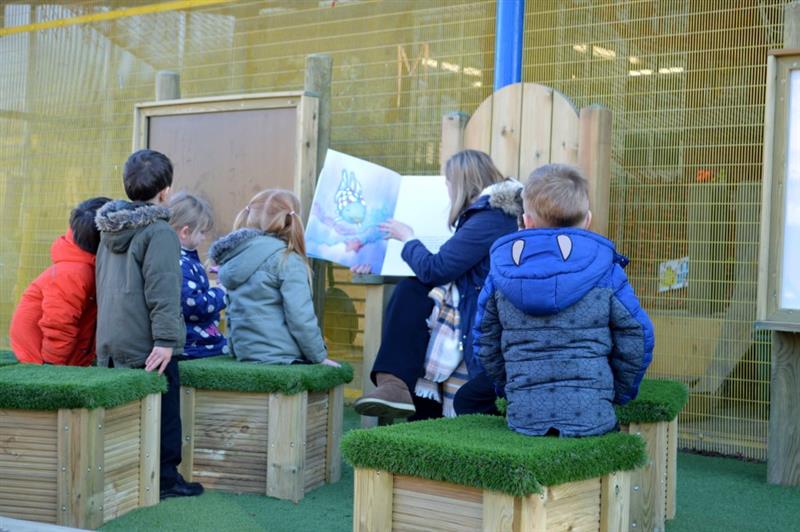
Once pupils have decided upon their story, they will have great fun transferring it to the Stage!
Atmosphere and different backdrops can be created through the use of lights, musical instruments and torches. Pupils will want to take on different roles be wearing costumes; this can help usually reserved pupils to feel more confident.
Through drama, children socialise with different members of their class, they may be able to share their emotions and develop empathy when viewing situations from a different perspective.
Pupils can use puppets and dolls which reflect a range of physical impairments and ethical and cultural backgrounds. This can help children to recognise similarities and differences when valuing everybody’s uniqueness.
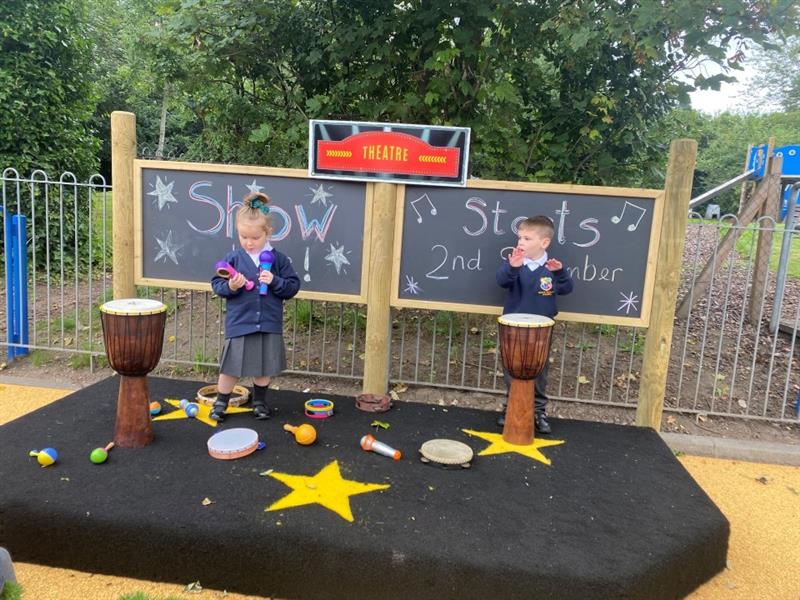
An inclusive play environment is a place where adults and children enjoy learning together. There will be a range of play equipment and materials which help children to gain an understanding of the world, develop rich language skills and form positive relationships with peers.

As practitioners we are continually seeking ways to update and refresh our ideas to best suit the changing needs of the children we teach. This could involve simple changes such as putting a new piece of fabric over the den posts, hanging bells from the weaving panel or moving certain equipment from its usual position and arranging it in a different way.
It is important to observe and listen to children’s feelings and opinions about their playspace, allowing them to talk about their favourite places to play and those which they don’t like or perhaps can’t access. An inclusive play environment should meet a child’s play goals and wishes, creating enriching experiences.



.jpg)

